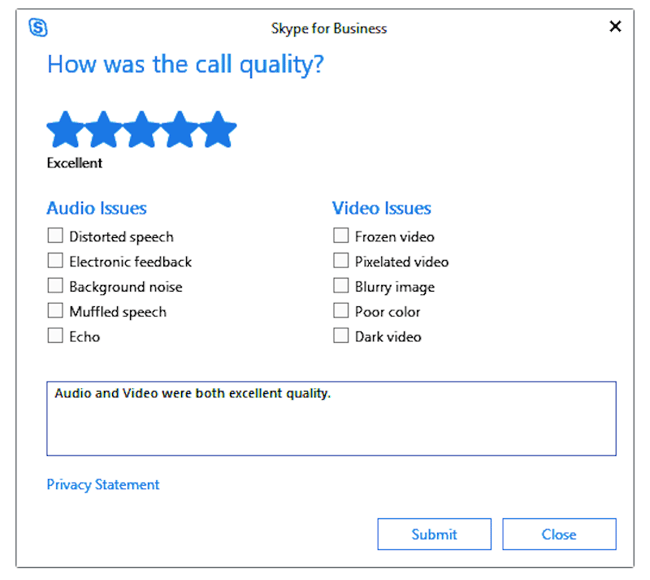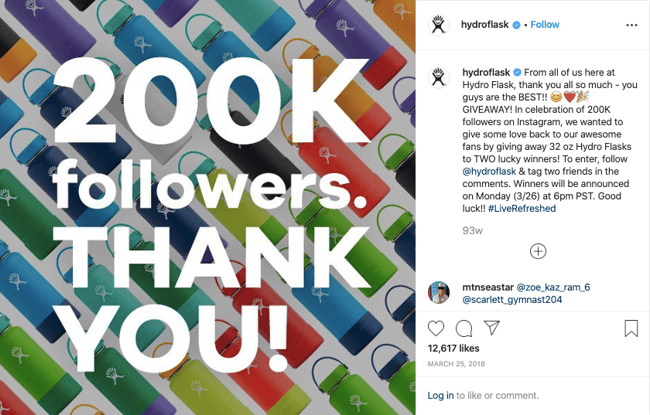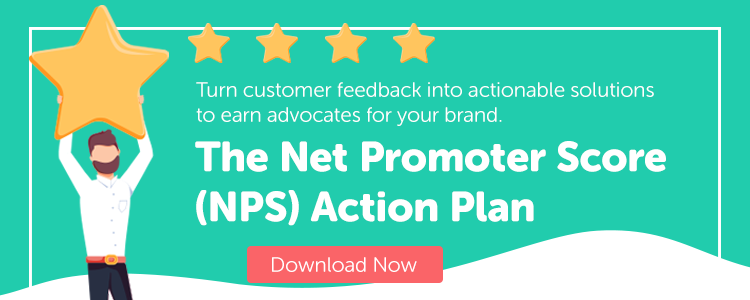The inbound world is becoming increasingly competitive. More companies are adopting the inbound methodology throughout their business, which makes it harder for you to stand out.
You need to do more than just drive sales. You need to connect with your customers on a deeper level. This is where a customer intimacy strategy plays a vital role in your business.
What Is Customer Intimacy?
There are many ways to look at customer intimacy. In its simplest form, the concept can be seen as a way to measure how aware you are of your customers' needs and how aligned your business is with them.
It is one of the three elements of the Values Discipline Model, which also includes product leadership and operational excellence. Essentially, customer intimacy is an advanced form of customer centricity.
The Benefits of Customer Intimacy
There are many ways your business can benefit from building deeper connections with your customers.
- Your customers are more likely to become your ambassadors.
- You can reduce customer turnover and boost retention.
- You stand out from your competitors by proactively predicting customer needs and providing solutions.
- You open the door for more cross-sell and upsell opportunities.
- You can reduce the customer acquisition cost.
- You build a strong, positive reputation in your industry.
As you can imagine, you can't simply snap your fingers and all of a sudden build these deep personal connections with your customers. You need a strategy in place to achieve customer intimacy.
The Challenges of Fostering Customer Intimacy
There are many obstacles you will face along the way.
- It takes full team buy in, from product development all the way to marketing and administration, to effectively predict and evolve with customer needs.
- Bloated decision making processes within your leadership team can slow down your customer intimacy strategy, making it hard to adapt to their new needs.
- New needs from your customers call for innovative problem solving from you, and if you're not agile enough to respond accordingly by developing more efficient processes, you can miss key opportunities.
- Partnerships can yield big results and make sense in certain circumstances, but being able to identify what partnerships matter and actually follow through can be a big time sink.
- If you over-commit to one specific segment within your industry, you risk losing diversity in your customer base.
- Finding the right data and analyzing it to uncover insights about what your customers want requires a lot of time and resources.
Once you're aware of these potential obstacles, you can create an action plan that makes it easier to overcome them to ensure you conduct your customer intimacy strategy in an efficient, effective manner.
Customer Intimacy Strategies and Examples
Your customer intimacy strategy is built to align your company with customer needs and prioritize solutions for addressing those needs. Typically, these strategies target a specific segment who you know you can satisfy.
There are many ways to build intimacy, including the following strategies:
Voice Your Appreciation Consistently.
You're grateful for your paying customers, so share the love! You should seek ways to express your appreciation in a fun, engaging manner.
One of the best ways to show appreciation is by appointing a customer advisory board. This is a group of customers your company regularly corresponds with. They offer advice, share their feedback on products and services, and submit requests for how you can improve their experience.
By actively seeking feedback and making changes based on their input, you're showing them that they have a direct impact on their experience. This breeds a sense of trust and respect.
One of the best examples of customer advisory boards comes from Oracle. The Oracle Communications Customer Advisory Board (CAB) meets at exclusive events, giving customers access to Oracle experts to help accelerate improving their products.
“CAB is a great platform where we get to meet the communities that are using similar types of products. It’s great to interact with peers who have similar domain knowledge and to be able to talk to them to see if they face similar challenges,” said SiriusXM’s Dalbir Gambhir, the senior director of application development. “Also, we get to meet the Oracle team that is working on innovation and advancement of products and processes.”
As you can see, these boards also lead to building communities of satisfied customers who actively participate in helping you build a better product or service.
Create Processes That Gather Customer Feedback.
Aside from customer advisory boards, you can seek feedback through other channels, such as surveys, exploratory interviews, and usability tests. These methods shed light on how customers perceive their experience with your company and your products or services.
Skype does a great job of gaining feedback from their customers using a basic survey that asks users to rate the quality of their call, identify any audio or video issues, and leave questions or comments in an open text field.

Source: My Skype Lab
You can also use net promoter score (NPS) surveys, which shows you levels of customer loyalty and overall satisfaction. You can calculate the percentage of customers who are detractors, passives, and promoters.
You're at risk of losing detractors, whereas passives are open to finding new opportunities with your competitors. Promoters, on the other hand, are not only loyal; they're actively sharing a positive sentiment toward your brand with others.
Conduct Touchpoint Analysis.
In the world of digital marketing, you have many customer touchpoints. They can find you organically on search engines. They might come to your blog a few times per week. If you have an awesome content offer, they'll probably download it and convert to a lead.
There are so many interactions you have with your customers and prospects. You can hone on in specific channels and assess what each touchpoint looks like.
By conducting a customer touchpoint analysis, you're gaining a better understanding of the customer experience and optimizing each interaction to provide the most value and to stand out.
Customer journey maps provide a visualization of the entire buying process, showing you exactly where customers enter your marketing and sales cycles. You can share this map with all your teams to find opportunities to foster intimacy.
Adopt Customer-Centric Policies.
Your main focus as a business is to attract, engage, and delight customers. But that doesn't just happen automatically. You need policies in place to continually drive value for your customers.
You can find what policies you need to adopt by assessing customer feedback. One of the best examples of a company creating customer-centric policies comes from Zappos, the renowned online shoe and clothing retailer.
CEO Tony Hsieh perfectly sums up what it means to be customer centric. “Customer service shouldn’t be a department," he said. "It should be the entire company.”
This is why Zappos has so many policies in place that are geared toward delighting their customer base. Some of the most notable policies include a 365 day return policy, free shipping, and 24/7 access to their customer service team.
Host Events Focused Around Customer Needs.
With a customer intimacy strategy in place, you know what your customers are looking for. And with that information, you can brainstorm ideas for helping them find solutions.
Events can be immensely helpful. For example, webinars, in-person workshops, and trade shows tailored to a specific pain point can help further establish credibility.
As a HubSpot Diamond Partner Agency, we're proud hosts of the Tampa HubSpot User Group (HUG). Every quarter, we schedule presentations that center on a specific area of focus that our audience is looking to address.
For example, the third quarter event of 2019 addressed the voice of the customer (VOC). Kevin Dunn, the Manager of Education at HubSpot Academy, gave a presentation showing attendees the importance of leveraging feedback to improve the customer experience.
Events like this keep our audience coming back for more. Also, given that it's an in-person event, we create an authentic, human connection that we can continue to build through ongoing correspondence and future in-person events.
Write Customer-Focused Case Studies.
Leverage social proof to showcase real, tangible success stories your customers have enjoyed. You can request testimonials and develop full case studies centered around a customer and their unique experience with your product or service.
HubSpot does a great job sharing success stories. For example, their case study for Airstream shows how they used their platform to boost lead generation while reducing the cost per lead. The case study breaks down different initiatives, including their ad campaigns and their use of the reporting tools.
Case studies like this can resonate with companies that share goals with Airstream. Prospects can see exactly how to use HubSpot's platform to drive leads and achieve related objectives. To put it simply, use customer success stories to connect with prospects and customers who have similar experiences.
Incentivize Customer Advocacy.
Once your customer base starts actively singing your praises, focus on encouraging them to continue advocating for your brand. Offer incentives, like discounts and free stuff, for those customers who leave reviews or share your content on social.
You can also host competitions and contests to keep them engaged with sharing their love for you. For example, Hydro Flask, a stainless steel water bottle company, created an Instagram campaign to celebrate the fact that they hit 200,000 followers.
The rules were simple: Follow their account and tag two friends in the comment section for a chance to win 32 oz. Hydro Flasks.
This is a simple game for happy customers to share their love and spread brand awareness. By doing this, the company is building a community and sparking excitement about their products.
Deliver Educational Resources.
Customers will continue to feel connected to your brand as long as you help them solve problems. When you create educational content and deliver high value resources, they're going to feel seen and understood. In turn, they will trust you more as an authority.
These resources you create should be helping your customers get the most value out of what they purchased from you. Fender, one of the world's most recognizable musical instrument manufacturers, does an excellent job of educating their customers, specifically guitar players.
Their blog includes a lot of great content. For example, they created a post on reasons to play guitar and included a helpful infographic that breaks down tips for sticking to your learning plan and time management advice.
They also offer online guitar lessons through Fender Play, a monthly subscription program that users can pay for to improve their playing skills.
As a Fender customer, you're not left to fend (yep, I went for it) for yourself. You're empowered, through their educational resources, to get the most value of the product you purchased. What's more rock n' roll than helping your customers succeed?
These strategy ideas and examples should get you inspired. Now, you're ready to start developing and executing your own customer intimacy strategy.
How to Develop a Customer Intimacy Strategy
There are many different approaches you can take. Regardless of what your strategy looks like, follow these steps to get it off the ground.
1. Empower Your Team.
Without full buy in from everyone in your company, how will you truly put the customer first? You need every team member on board, eager to delight and support customers.
Create a training program that gives your teams the resources and tools they need to anticipate customer needs and proactively serve them in a positive way. Customer intimacy needs to be in the forefront of their minds at each touchpoint.
You can also use customer journey mapping , as mentioned above, to get a bird's eye view of the entire customer experience you're creating. Use these maps for each segment of your audience, and make sure you're sharing that information with everyone in your company.
That's one of the best parts of customer journey maps – they're sharable. Include them in part of your training so everyone stays focused on how to delight and support customers during every interaction.
2. Leverage Customer Data.
Your company needs visibility on all customer interactions, which is why having a CRM is essential. Keep your data centralized and accessible to your teams.
It helps to develop a CRM strategy that lays out how your teams will compile and aggregate data. By having a plan in place, your team will know exactly how to analyze data in a way that helps them identify behavioral patterns. This, in turn, will help them anticipate needs and properly serve them.
3. Appoint Resources to Serve the Right Segments.
With all the customer data at your disposal, you're able to properly segment and prioritize your highest value customers. This information helps you allocate enough resources to each segment of your customer base.
Use data from your most valuable customers to find trends in their buying habits and other behaviors they're exhibiting. This will inform how you tailor messaging and personalize your contact with them.
4. Measure the Impact and Evolve Over Time.
The best way to hit your customer intimacy goals is obvious – measure your progress. Once you have a goal established, you'll know exactly what metrics to look at.
Some of the metrics most commonly associated with customer intimacy strategies include word of mouth sentiment, customer churn, referrals, product adoption, and NPS. You can measure these using analytics tools within your marketing automation software or through third party tools.
By looking at these metrics, you can adapt your strategy over time. For example, if you notice a low percentage of promoters in your NPS, you can allocate more resources to your customer support and success teams to guide detractors and passives to eventually become happy promoters.
Customer Intimacy Yields Sustainable Growth
It's a no brainer – if your customers feel valued and supported and if you're consistently helping them get more value out of your products or services, they're going to sing your praises.
These happy advocates of your brand become long-term customers, and they also bring in referrals. The results of customer intimacy strategies compound over time. Happy customers who you build deep connections with are who keep your business thriving.



Jeff Previte
I am a Content Manager at Bluleadz. I enjoy spending time outdoors -- camping, hiking, hammocking, and everything in between. I also love reading, writing, and learning how to play guitar.